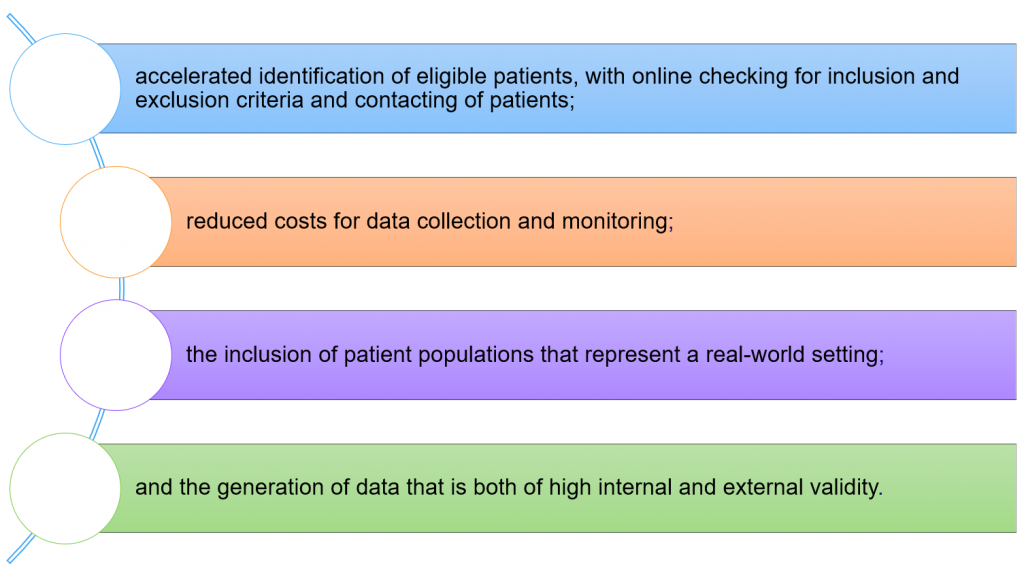
By Heiner C. Bucher, MD, MPH
Director, Basel Institute for Clinical Epidemiology & Biostatistics
University Hospital & University of Basel
Basel, Switzerland
Randomized controlled trials comparing new compounds to placebo or standard treatment form the pivotal base for regulatory approval and marketing of new pharmaceuticals or devices. Such trials are typically conducted under highly standardized conditions to document the efficacy and short-time safety of new drugs, biologics, or devices. Design and conduct of such trials have to comply with the high standards of regulatory agencies for drug approval. For serious conditions and situations of unmet medical needs, many drugs are approved by accelerated approval based on limited evidence. In such situations, regulatory agencies may demand additional post-approval data for aspects of effectiveness and safety.
Evidence from drug approval trials, however, often fails to address important questions by patients, providers, payers, and policy makers. Efficacy trials are rigorously designed to investigate one treatment in a well-defined, selected patient population. Patients with co-morbidities, older patients, or those with adherence problems (as are more typically seen in a real-world setting) are underrepresented in such trials. The effectiveness or safety issues may well differ in such populations, or drug-drug interactions due to polymedication in patients with multiple chronic conditions may limit the use of new compounds. Evidence from head-to-head comparisons of new compounds that have been evaluated against placebo or some standard of care is often lacking. Payers, however, base reimbursement decisions on the net benefit and costs of new treatments and must rely on indirect evidence in the absence of head-to-head comparison.
Data Collection
To fill this gap, pharmaceutical companies and clinical researchers have established for many years observational databases or registries for post-marketing surveillance and addressing important prognostic research questions. Over the years, high quality prospective cohort studies and registries have generated excellent data that allow for comparative effectiveness and safety studies of newly licensed drugs, an activity now known as real-world evidence. With the advance of information technology, routine online data collection in clinical medicine has become a reality. Standardization of routine clinical data collection by regular measurement of patient relevant outcome variables and data linkage of hospital data from different sources (e.g., laboratory, imaging, and biobanking material) is becoming a reality in many disease areas. This offers exciting possibilities for comparative effectiveness and health services research in addition to the benchmarking of health care facilities or providers based on routinely collected quality of care outcome parameters.
Cohort studies or registries with highly standardized data collection also allow for the set-up of pragmatic randomized controlled trials that are nested into existing prospective observational studies or registries. These pragmatic trials offer considerable advantages, such as:

Clinical Registries
The Swedish national registry is exemplary for clinical research that serves health services research, quality control, and the conduct of pragmatic registry-based trials. Several ongoing and completed pragmatic trials in patients with acute coronary heart disease have been published by the network. For example, investigators are currently conducting an open label trial to show that bivalirudin is superior to heparin for preventing death and myocardial or major bleeding events at 180 days in 6000 patients with ST and non-ST elevation myocardial infarction who undergo a radial percutaneous coronary intervention. These substances were never compared head-to-head and will be investigated within the Swedish Web-system for Enhancement and Development of Evidence-based care in Heart disease Evaluated According to Recommended Therapies (SWEDEHEART).1 In another registry-based trial, thrombus aspiration versus usual percutaneous coronary intervention was investigated in over 7000 patients with ST elevation myocardial infarction. The trial showed no advantage of thrombus aspiration for the prevention of overall death after one year.2 Most remarkably, no patients were lost to follow-up.
This Swedish national registry and registry-based trial network indicates the potential of future comparative effectiveness research to address an array of research questions with the most adequate study designs. Costs for the set-up of such systems are enormous; however, the advantages for standardization of health care and health system-wide monitoring of the quality of care and improvement of patient outcomes appear to be worth the investment. Notably, such a system is also very attractive for the pharmaceutical industry for conducting drug approval trials, as quite reliable figures of eligible patients and center-based patient recruitment potentials are available. The future will show whether registry-based pragmatic trial designs are suitable for drug licensing and reduce time for patient recruitment and resources for monitoring. A first example appears promising.3
References
- Erlinge D, Koul S, Eriksson P, et al. Bivalirudin versus heparin in non-ST and ST-segment elevation myocardial infarction-a registry-based randomized clinical trial in the SWEDEHEART registry (the VALIDATE-SWEDEHEART trial). Am Heart J. 2016;175:36-46.
- Lagerqvist B, Frobert O, Olivecrona GK, et al. Outcomes 1 year after thrombus aspiration for myocardial infarction. N Engl J Med. 2014;371(12):1111-20.
- Woodcock A, Vestbo J, Bakerly ND, et al. Effectiveness of fluticasone furoate plus vilanterol on asthma control in clinical practice: an open-label, parallel group, randomised controlled trial. Lancet. 2017;390(10109):2247-55.
About the author:
Heiner C. Bucher is the director of the Basel Institute for Clinical Epidemiology & Biostatistics, a University of Basel associated academic institution. He is professor for clinical epidemiology and chief of the clinical epidemiology unit at University Hospital Basel. His research activities involve the use of routinely collected large scale data and (multi)cohort studies to address patient relevant outcomes on drug effectiveness and safety in a real-world setting. He has stimulated HTA methodology by introducing the first indirect comparison method.